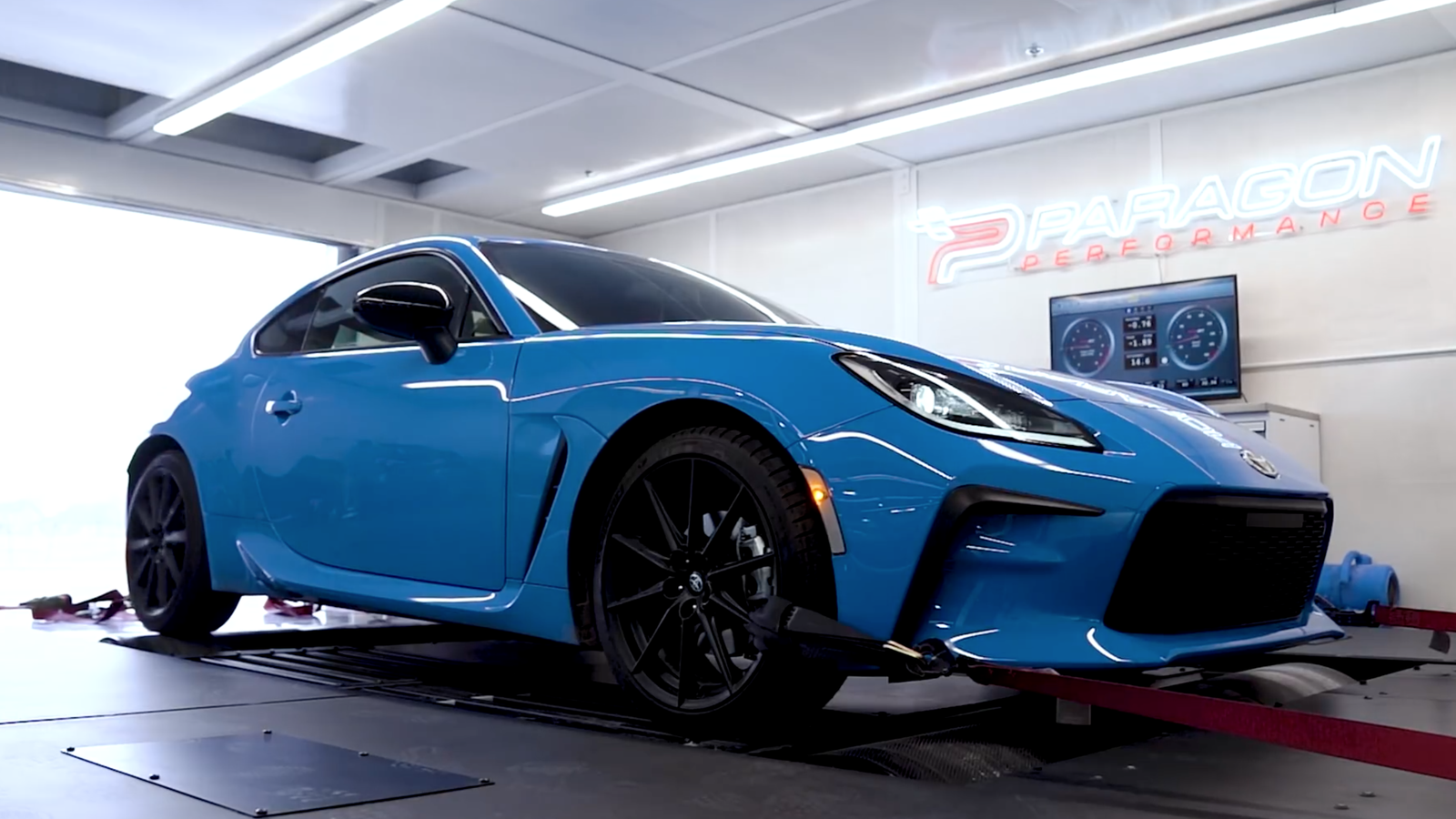The Toyota GR86 Produces Way More Power Than You Think

Driving enthusiasts can’t wait to get their hands on the Toyota GR86. Offering the mouthwatering combination of a front-mounted engine with rear-wheel drive as seen on the original GT 86 coupe, the newcomer is aiming to take things to another level. Early drives suggest that the GR delivers the goods as well, with Toyota clearly having set out to address the shortcomings of the old GT. Now an independent dyno test of the car suggests it might even be packing more of a punch that the manufacturer is letting on.
One area the GT86 came in for criticism for was its lack of power. In fact, this was probably THE issue that let the car down in the eyes of its target market. That’s why, for the GR86 the old 2.0-litre naturally-aspirated four-cylinder boxer engine was enlarged to 2.4-litres. Toyota has claimed that the new unit puts out a healthy 224bhp and 184 lb-ft of torque but new evidence suggests that might be on the conservative side.
See also: New Brabus 800 Is A 888bhp Mercedes-AMG E63S On Steroids
The team from YouTube channel FTspeed decided to put a 500-mile (800km) 2022 Toyota GR86 through a series of dyno runs to see what the car’s performance figures really were. After a trip to Paragon Performance, the results were in - and they were impressive, to say the least.
On the final run, FTspeed recorded a figure of 212.59bhp from the wheels of the Japanese sports car. When drivetrain power losses are factored in, it’s estimated that this GR86’s engine produces a power figure more like 250bhp - more than 25bhp over Toyota’s original claim. No wonder the GR86 can launch from 0-62mph in 6.3 seconds, compared to 7.6 seconds for the GT86.
This understatement of the car’s potential is an interesting contrast with Subaru’s claims for its first generation BRZ, which was effectively the same car as the Toyota GT86. While the Subaru put out a claimed 202bhp from its engine, dyno results reported around 175bhp at the wheels. The new GR86-based BRZ offers a claimed 228bhp, slightly up on its Toyota sister car.
Considering how well the GR86’s naturally aspirated engine performs, we’re excited to see what this pocket-rocket could do with a supercharger or a turbocharger fitted.


Comments
Noice.
One area the GT86 came in for criticism for was its lack of power. In fact, this was probably THE issue that let the car down in the eyes of its target market.
To be very honest, I don’t think that’s true at all. I don’t think that the issue of the GT86 really was about power (sure, some people did want some more power, but that’s generally the case with most smaller cars), and rather the torque figures, more specifically the torque dip in the midrange. That’s what people were complaining about the most. The Fiesta ST (the 4 cylinder one) had about the same power (197 hp vs 205 for the 86), and the weight was nearly identical (1240 kg for the Fiesta when it came out, 1259 kg for the BRZ of the same model year) yet everyone loved the Fiesta, and that’s because it had much more torque.
That’s why, for the GR86 the old 2.0-litre naturally-aspirated four-cylinder boxer engine was enlarged to 2.4-litres.
…no. The 2.4 was also mostly to feature better torque figures rather than power. Yes it got more power as a result, obviously, but that’s not the main reason. Toyota wanted to keep a naturally aspirated engine for the car, so the only way they could make more torque was by increasing the displacement. If all Toyota wanted was to make more power, they could have very well have kept a 2.0L but redesigning it with a higher rev limit: Honda has been getting over 200 hp for years with 2.0L engines that were naturally aspirated. The S2000 was getting 240 hp from a 2.0L engine, and that was with technology from the late 90s. Even Toyota has experience making high-revving engines, so does Yamaha, which has been collaborating with Toyota for decades. But by making a high revving engine they would have got even less torque than they already had at the beginning, which was the opposite of what they wanted.